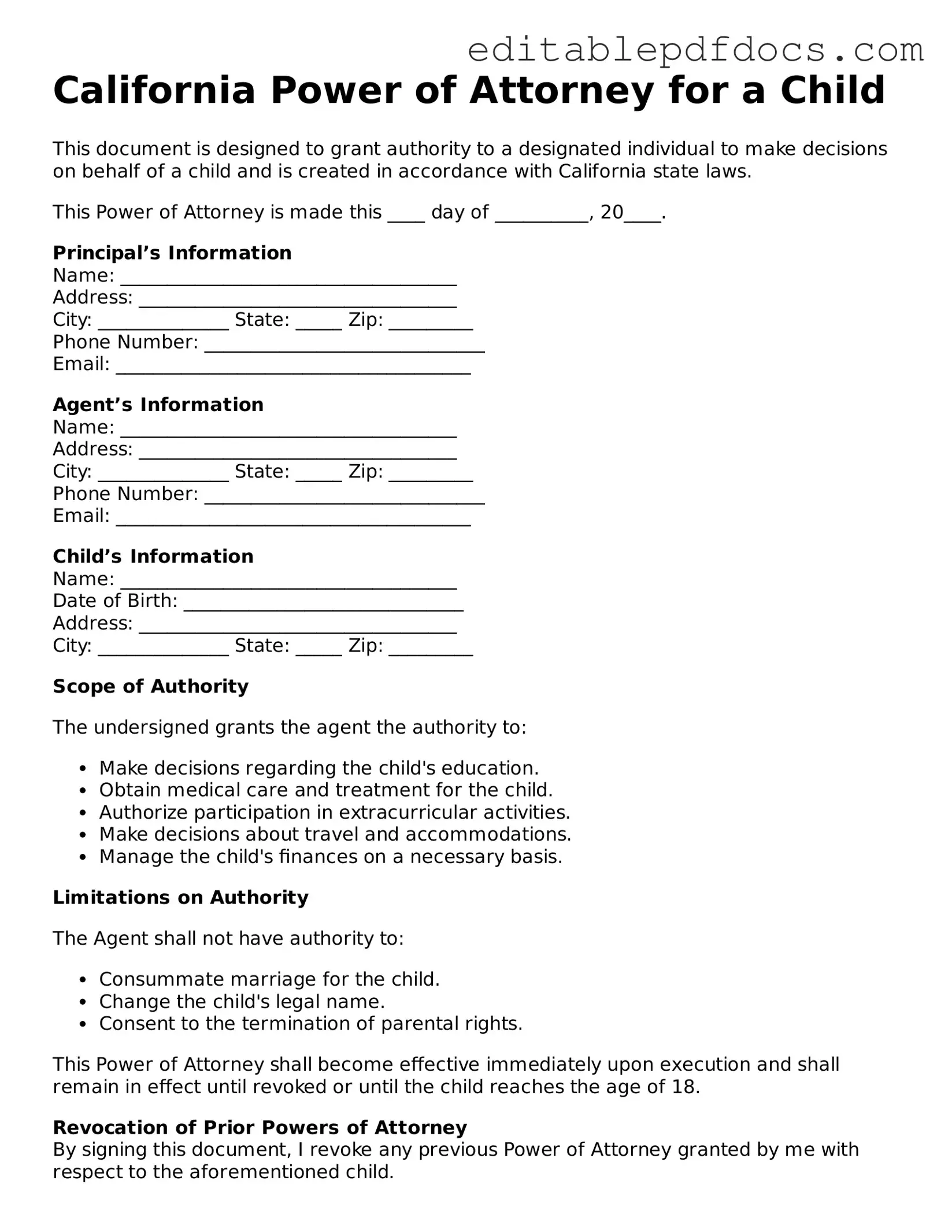Filling out the California Power of Attorney for a Child form can be a straightforward process, but many people make common mistakes that can lead to complications later on. One frequent error is not providing complete information about the child. It's essential to include the child's full name, date of birth, and any other identifying details. Missing this information can create confusion and potentially delay any actions that need to be taken on behalf of the child.
Another mistake involves the selection of the agent. The form requires that you designate a specific individual to act on behalf of the child. Some people mistakenly choose more than one agent or fail to provide the agent's contact information. This can lead to disputes or misunderstandings about who has the authority to make decisions for the child.
Additionally, some individuals overlook the importance of signing and dating the form. A signature is not just a formality; it validates the document. If the form is unsigned or dated incorrectly, it may not hold up in legal situations. Therefore, always ensure that the form is signed and dated appropriately.
Another common oversight is not considering the duration of the power of attorney. The form allows you to specify how long the authority will last. Failing to indicate a timeframe can lead to uncertainty about when the agent's authority begins and ends, which could affect important decisions regarding the child.
Some people also neglect to review the form for accuracy after filling it out. Typos or incorrect information can lead to significant issues later. Taking a moment to double-check all details can save time and prevent potential legal problems.
Moreover, individuals sometimes forget to inform the child’s other parent or guardians about the power of attorney. Keeping all parties in the loop is crucial to avoid misunderstandings or conflicts. Open communication helps ensure that everyone is aware of who is authorized to make decisions for the child.
Another mistake is not considering the specific powers granted to the agent. The form allows you to outline what decisions the agent can make, such as medical or educational decisions. Failing to specify these powers can lead to confusion and limit the agent's ability to act effectively in emergencies.
In some cases, people may use outdated versions of the form. Laws and regulations can change, and using an old form may lead to issues with its acceptance. Always check that you are using the most current version of the California Power of Attorney for a Child form.
Lastly, individuals sometimes forget to have the form notarized. Although not always required, notarization can add an extra layer of validity to the document. Having it notarized can help prevent disputes about the authenticity of the power of attorney.
